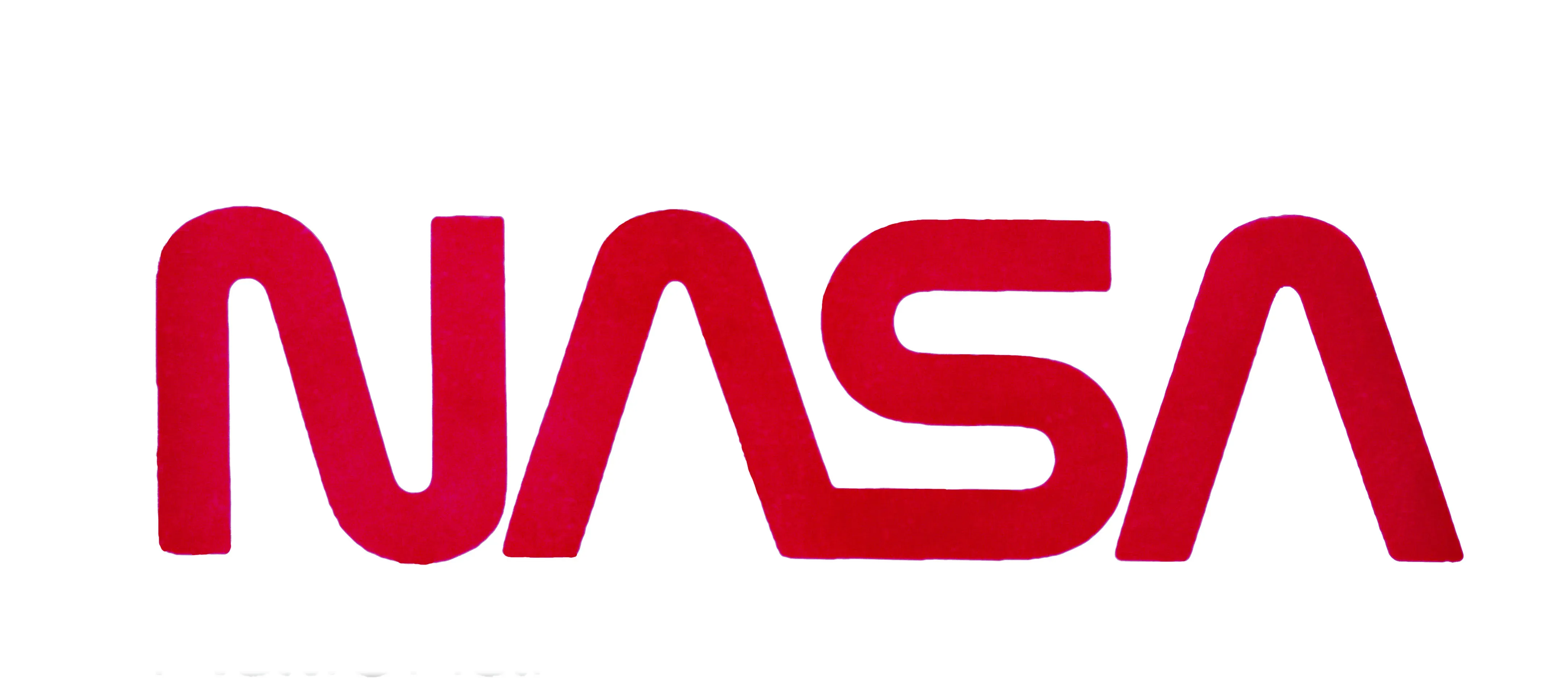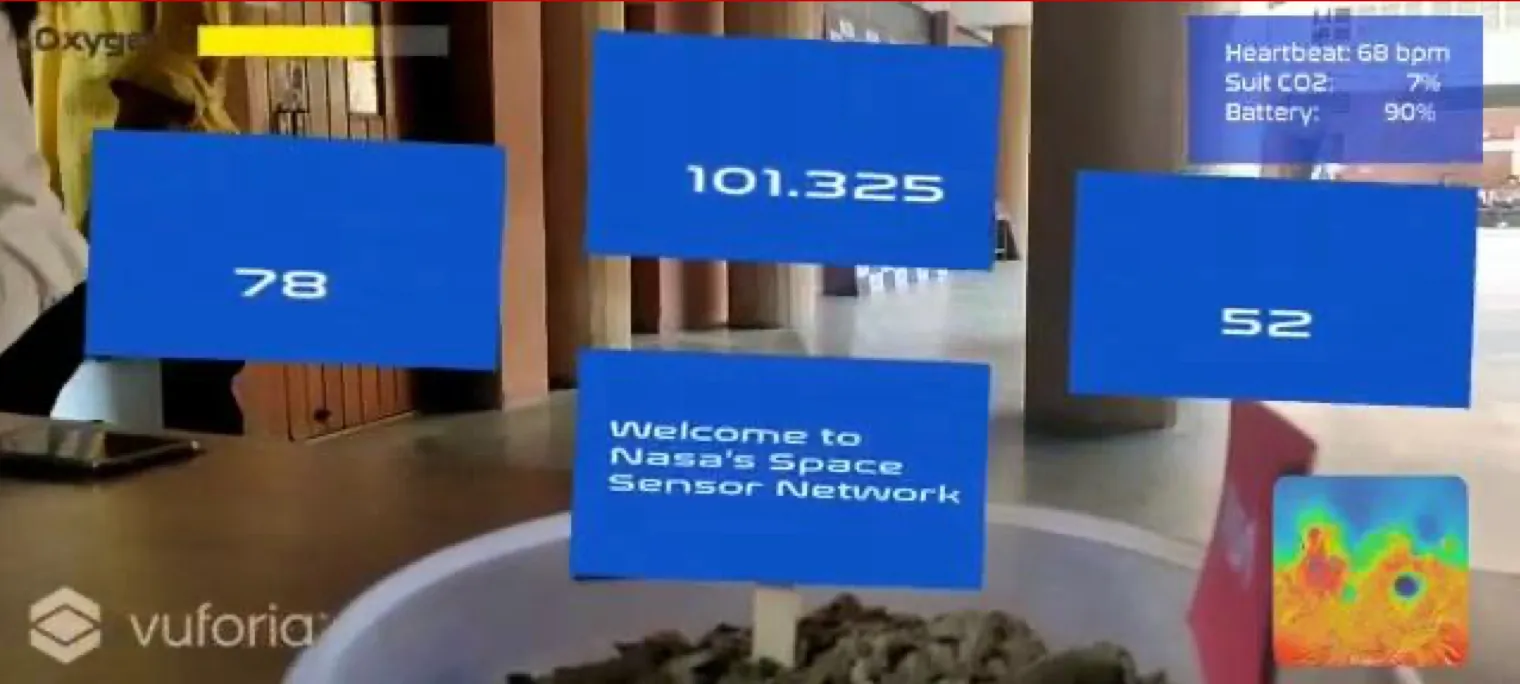AR HUD Application with Real-Time API Integration
At the 2019 NASA SpaceApps challenge, I led the development of an innovative Augmented Reality (AR) Heads-Up Display (HUD) application. This mobile solution overlays real-time information from various APIs onto the user’s view of the world through their device’s camera. Here’s a deep dive into the technical aspects of creating this cutting-edge application.
Technology Stack
- Development Platform: Unity
- AR Framework: ARCore (Android) / ARKit (iOS) [Abstracted with Unity and Vuforia]
- Networking: RESTful API integration (Assuming TCP on mars :) )
- UI Framework: Custom shader-based UI for optimal AR performance
Key Features
- Real-time API data fetching and display
- AR object recognition and tracking
- Dynamic UI elements that respond to real-world positioning
- Low-latency updates for seamless user experience
Development Process
1. AR Foundation Setup
We utilized Unity’s Vuforia Engine add-on to add AR Functionality to the app. We then create Quads to emanate from target images. The idea is for these images to be present near data/network locations, so you can get all your information and display it to the Astronaut.
Could there be any other image target we can think of?

2. API Integration
We developed a flexible API manager to handle various data sources, for our astronaut on Mars. Question is, will Mars ever support TCP traffic? OF COURSE!
using UnityEngine;
using UnityEngine.Networking;
using System.Collections;
public class APIManager : MonoBehaviour
{
private const string API_BASE_URL = "https://api.host.com/";
public IEnumerator FetchData(string endpoint, System.Action<string> callback)
{
using (UnityWebRequest webRequest = UnityWebRequest.Get(API_BASE_URL + endpoint))
{
yield return webRequest.SendWebRequest();
if (webRequest.result == UnityWebRequest.Result.Success)
{
callback(webRequest.downloadHandler.text);
}
else
{
Debug.LogError("Error: " + webRequest.error);
}
}
}
}
3. HUD Component Development
We now create our HUD screen on the AR Scene set-up by Vuforia. We can link everything, including Remaining Oxygen, GPS Location with a minimap, and next objectives for the astronaut.

4. Object Recognition and Tracking
I then implemented object recognition to anchor AR elements to the worm logo:
using System.Collections;
using System.Collections.Generic;
using UnityEngine;
public class anim1 : MonoBehaviour
{
private Animator anim;
private MeshRenderer ms;
private bool flag = false;
// Start is called before the first frame update
void Start()
{
anim = GetComponent<Animator>();
ms = GetComponent<MeshRenderer>();
}
// Update is called once per frame
void Update()
{
if ((PinchCheck() > 0) && (flag == true))
{
Debug.Log("Pinch In.\n");
if (null != anim)
{
//Play Plane_1
anim.Play("info1_reverse");
flag = false;
}
else
{
Debug.Log("Animation is Null");
}
}
else if ((flag == false) && (PinchCheck() < 0))
{
Debug.Log("Pinch out.\n");
//Debug.Log(PinchCheck());
if (null != anim)
{
//Play Plane_1
anim.Play("info1");
flag = true;
}
else
{
Debug.Log("Animation is Null");
}
}
}
float PinchCheck()
{
if (Input.touchCount == 2)
{
Touch touchZero = Input.GetTouch(0);
Touch touchOne = Input.GetTouch(1);
Vector2 touchZeroPrevPos = touchZero.position - touchZero.deltaPosition;
Vector2 touchOnePrevPos = touchOne.position - touchOne.deltaPosition;
float prevTouchDeltaMag = (touchZeroPrevPos - touchOnePrevPos).magnitude;
float touchDeltaMag = (touchZero.position - touchOne.position).magnitude;
float deltaMagnitudeDiff = prevTouchDeltaMag - touchDeltaMag;
return deltaMagnitudeDiff;
}
return 0;
}
}
5. Performance Optimization
To ensure smooth performance, we implemented several optimization techniques:
- Use of object pooling for frequently updated UI elements
- High Contrast Image Target for Vuforia Compatibility
public class HUDOptimizer : MonoBehaviour
{
public int poolSize = 20;
private List<GameObject> hudElementPool;
void Start()
{
InitializeObjectPool();
}
void InitializeObjectPool()
{
hudElementPool = new List<GameObject>();
for (int i = 0; i < poolSize; i++)
{
GameObject element = CreateHUDElement();
element.SetActive(false);
hudElementPool.Add(element);
}
}
GameObject GetHUDElement()
{
foreach (var element in hudElementPool)
{
if (!element.activeInHierarchy)
{
element.SetActive(true);
return element;
}
}
// If no inactive elements, create a new one
GameObject newElement = CreateHUDElement();
hudElementPool.Add(newElement);
return newElement;
}
GameObject CreateHUDElement()
{
// Logic to create a new HUD element
return new GameObject("HUDElement");
}
}
Challenges and Solutions
- Real-time Data Integration: We implemented a pub-sub system to efficiently update UI elements as new data arrived from APIs.
- AR Tracking Stability: Custom image anchors and sensor fusion techniques were used to improve tracking stability in various lighting conditions.
- Battery Optimization: We developed an adaptive rendering system that adjusts the complexity of AR overlays based on the device’s battery level and performance capabilities.
Conclusion
This AR HUD application pushes the boundaries of mobile AR technology, seamlessly blending real-time data with the user’s environment. By leveraging cutting-edge AR frameworks and custom optimizations, we’ve created a responsive and intuitive interface that enhances the user’s interaction with their surroundings. This project sets a new standard for information visualization and real-world data integration in augmented reality applications.
